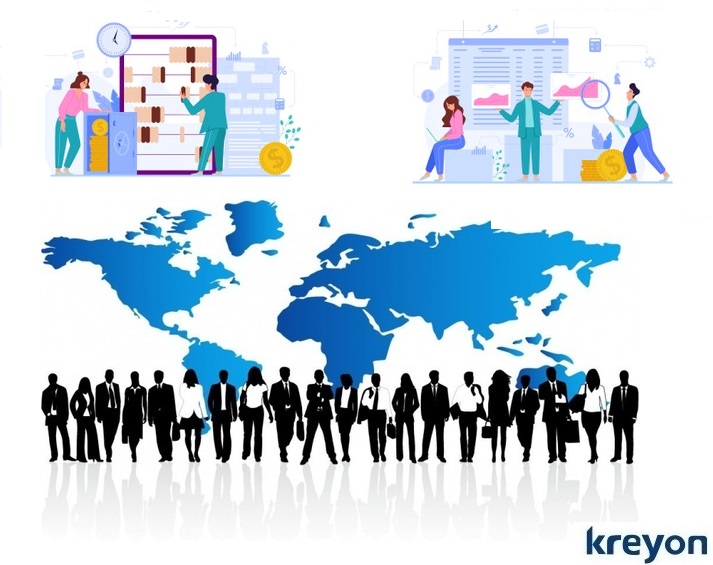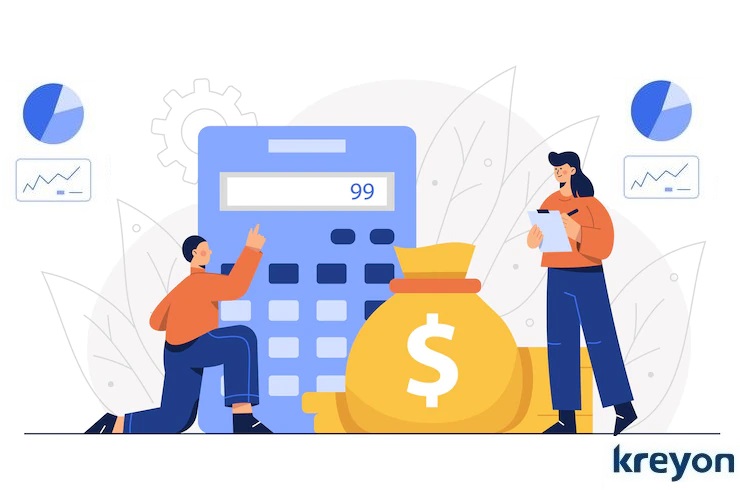How to Use Predictive Data Analytics for Lending Software

Lending software driven by predictive data science is resulting in reducing lending risks. As fintech companies and NBFCs look to reduce their loan disbursements risks, lending automation adds risk analysis, increases transparency and leads to loans within minutes.
The lending software and app allows borrowers to apply for loans from their mobile apps and get the money in their accounts almost instantly. The lending algorithm uses predictive data analytics to qualify the borrowers based on the lending firm’s criterion and processes the loans with greater confidence.
The financial institutions are looking for digital innovations and adding to their technological prowess by upending their systems with improved capabilities. Here’s a look at how predictive data analytics is assisting companies to make better lending decisions:
1. Data Mapping for Underwriting

NBFCs and financial institutions have well established procedures for lending money to borrowers. However, they use third party tools and processes for the audit trail of borrowers before disbursement. The documentation needs are also stringent.
The data mapping helps companies to gather all structured and unstructured data for analysis. The internal data from all applications, third party integrations, credit scores, borrower details etc. are used for analysis.
It is important for the financial institutions to map all the data related to the assessment of loans. The external data related to borrowers is assessed for loan qualification too. The data is cleansed and mapped as per the lender’s criterion for loan disbursement.
The various types of loans like house loan, agricultural loan, and business loans have different requirements for risk assessment. Good data mapping cleanses the relevant information according to the goals of the organisation. Some data may be expunged from the learning process as per the needs of the model.
2. Fraud Detection
The lending software ensures disbursal of loans instantly, typically less than 10 minutes. It adds risks, liabilities and contingencies that need to be guarded for financial institutions. The automation and use of data helps lenders preclude frauds by leveraging third party identity verifications.
When the borrower submits the loan application from his mobile device, the documents are verified and authenticated before loan is disbursed. Typically, the lending algorithm uses several parameters for evaluating the borrowers identity, bank records, address information and credit scores etc.
The use of fraud detection measures improves the speed at which loans are disbursed. More importantly, it can circumvent any malicious users or identity spoofing behaviours by technology.
The financial companies verify the identity, credit scores, criminal records, employment details and compensation abilities of a borrower before approving a loan. The automation of the verification process reduces risk and liabilities for the financial institutions significantly. It makes it seamless for borrowers to get instant credits digitally.
3. Risk Selection Analysis

The predictive assessments of the borrowers require thoroughly scrutinising the risk factors. Take for e.g. every loan requires evaluation of factors like type of loan, industry, size, borrower history, credit checks, employer details etc.
The use of predictive analytics for underwriting the loan application makes recommendations related to borrowers. The underwriting process is automated and the report is sent to the supervisors for approval with risks specified. The underwriter or the manager can then approve the loan or the system can auto approve loans up to a certain range.
The use of technology can help lending companies to categorise and assess risks. The system uses analytical models for learning. It adds to the knowledge base of the system to take self improving measures and increases the confidence levels for loan disbursements.
There is also a case of dynamic interest rates based on the customer profiles. If a customer has higher risks according to the lending algorithm, it can raise the interest level for the borrowers or ask for additional collaterals.
Interestingly, even ecommerce companies like Alibaba use the online customer data for providing credits to them. The customer data across Alibaba platforms is analysed and accordingly the right credit limit is extended to the customer.
4. Bad Debt Analysis
The training models for lending software requires extensive learning before it churns out accurate results. The back testing is done using data for previous borrowers that defaulted on loans. The model is then checked for its accuracy. The historical data of defaults is analysed to improve the lending accuracy of the algorithm.
The model is trained using bad debts from a variety of lending institutions and NBFCs. The data points are collected, scrubbed and analysed for predictive patterns for loan disbursements. The data of defaulting customers is thoroughly mined for detecting patterns and making predictions for loan disbursements.
The lending companies are able to build robust models with checks and balances to reduce non paying borrowers. Companies use data and information from third party lenders as well for reducing their loss-ratio performance.
The financial habits of borrowers, their average bank balances, smart phone usage patterns, credit checks and several other parameters are used for rigorously analysing bad debt behaviours. The training data can be used for assessing the lending algorithm performance and benchmark it consistently to make it above industry average loss percent.
5. Collateral Value Assessment
One of the key requirements of lending is to assess the realtime value of collaterals and mortgages submitted by the borrowers. The collateral value assessment can be done by the lending algorithm proactively. The property or the assets are valued as per their fair value before loans are disbursed.
The risks are mitigated by using technology to come up with accurate value assessments of the collaterals. In many financial institutions, bad debt is often accompanied by undervalued collaterals. The foreseeable market value of the underlying assets for collateral are important for big loans.
Technology can improve the risks and potential threats of damages by explicitly spotlighting the thorny issues. It leads to higher quality of balance sheets, reduces customer defaults and improves the bottom line too.
6. Lower Lending Risk with Improved Forecasts
The lending software reduces risks and improves the quality of loans disbursed to the borrowers. It uses behavioural pattern analysis by analysing the customer data from online purchases, credit history, geo locations, merchant activities, financial documents etc.
As the industry moves increasingly towards open standards and more data is available for forecasting, the financial companies can predict loan defaults more accurately. The financial data, behavioural patterns and predictive models can be used for creating a stronger underwriting system.
The information is aggregated using predictable models, which analyses large streams of data to lower the lending risks. It relies on a wide range of parameters to predict the risks of defaults and thereby reduce the bad debts for financial institutions. The lending algorithm reduces, if not eliminates, human biases for disbursal of loans and improving the performance of financial companies.
Digitisation and innovations are changing the way NBFCs and fintech companies operate. They leverage technology to give quick loans for their customers without elaborate paperwork or processes to build solutions for increasing their scale.
Kreyon Systems provides tailored lending management software for financial institutions & NBFCs. If you have any queries for us, please write to us.
